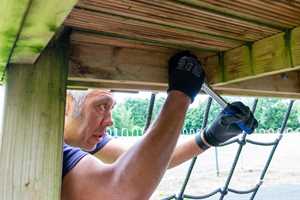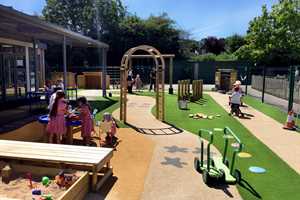Playground Design
Transform Your Playtime with Pentagon Play!
Playtime happens in our primary schools every single day. Parents and school staff alike hope that playtime is a much-loved part of a child’s day where students spend time outdoors, socialising and learning as they actively explore.
Educators continually monitor school performance, striving for change and improvement whether it be through curriculum development, improved assessment procedures or new teaching strategies yet playtimes can be overlooked. In fact, there has been no new national play strategy set by the government since 2008.
Could playtimes be happier in your school?
If we want students to develop creative and active minds, to have plenty of opportunities to move their bodies and to be alert and ready to learn when they enter the classroom then surely improving playtimes takes priority. Quality playtimes can have an impact on learning, leading to a continuation of high standards.
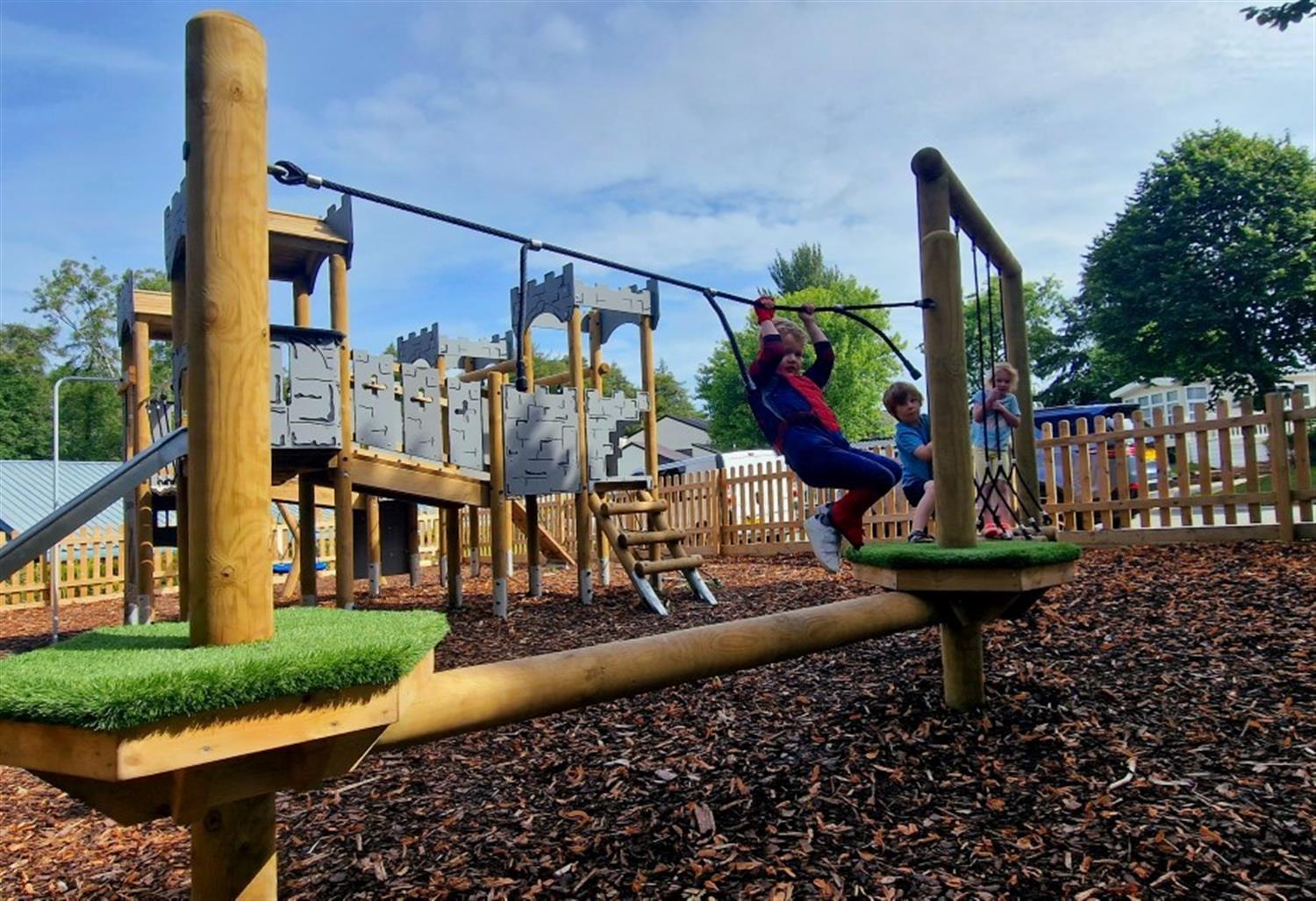
Does this playtime scene sound familiar: ‘A large area of the playground is dominated by football, the grass space is only used in the summer, the old climbing frame is unusable and staff spend 30 minutes dealing with playground issues.’ If so, Pentagon Play can help you to enhance your playtime offering.
25 Years as Leading Playground Experts
We like to think of ourselves as ‘Playground Experts’ here at Pentagon Play. For the last 25 years we have worked with many schools across the UK ranging from rural locations to busy inner-city primaries. Regardless of the playground space we have to work with, we are confident that we can sustainably improve the quality of play opportunities.
Children Need to Move!
How often do we ask students to sit for long uninterrupted periods in the classroom? Playtime should offer children the time and space to initiate unstructured play, activity and movement.
Children need a vast number of opportunities every single day to explore the spaces around them and the features, equipment and resources in their environment. Playtime is not what children do in between learning. It is during playtime that children learn things that simply cannot be taught.
Research tells us that children’s lifestyles are becoming increasingly sedentary and a lack of physical activity is causing negative health effects. Establishing healthy patterns of movement in childhood can prevent adult inactivity. Our Pentagon motto, “We improve children’s lives today, to shape happier and healthier grown-ups tomorrow” reinforces this core belief.
Schools are an important setting for promoting healthy activity and encouraging children to become more active in their everyday lives. School settings that carefully consider their playground landscape features such as slopes, textures, heights and zones can increase physical forms of play leading to better health outcomes.
Playtimes Aid Learning
Children are curious beings who want to find out more and make meaning. If we don’t provide opportunities for adequate movement this can lead to frustration and discomfort.
Playtime provides a break in the school day. During this time children should be given materials and space to interact with their peers. Breaks throughout the school day have been proven to improve children’s attention in the classroom.
Pupils may need to move themselves and objects in order to fully experience and remember their learning. This is demonstrated when moving materials or at the Mud Kitchen where children experiment with weight and size, creating deeper more meaningful mathematical experiences.
Playtimes should provide children with a plethora of experiences. Creative writing can be challenging if children have not ‘lived out’ the experiences they are expected to write about. Playtime has the power to spark imaginations and generate ideas for writing.
Relationships at Playtime
The school playground is often the place where children really develop social relationships with a variety of other children. Through free play children learn to actively listen, to stay calm, to acknowledge their own and others feelings and to devise solutions.
Through play children learn to get on better, to work together, to negotiate and take responsibility. Educators can teach these skills in social groups and through role play but playing with friends offers ‘real-life’ opportunities to practise and learn these skills at a deeper level.
Is Playtime Highly Valued in Your School?
With increasing pressure for schools to perform academically and a packed curriculum to cover are playtimes still highly valued?
UK reports state that since 1995 our youngest children have lost 45 minutes of playtime a week and children aged 11-16 have lost over 65 minutes. The reasons for this include increasing teaching time and a concern over time spent managing poor behaviour. Members of senior leadership teams were perhaps spending an increasing amount of time resolving playtime issues and schools cite high level of playtime accidents/incidents.
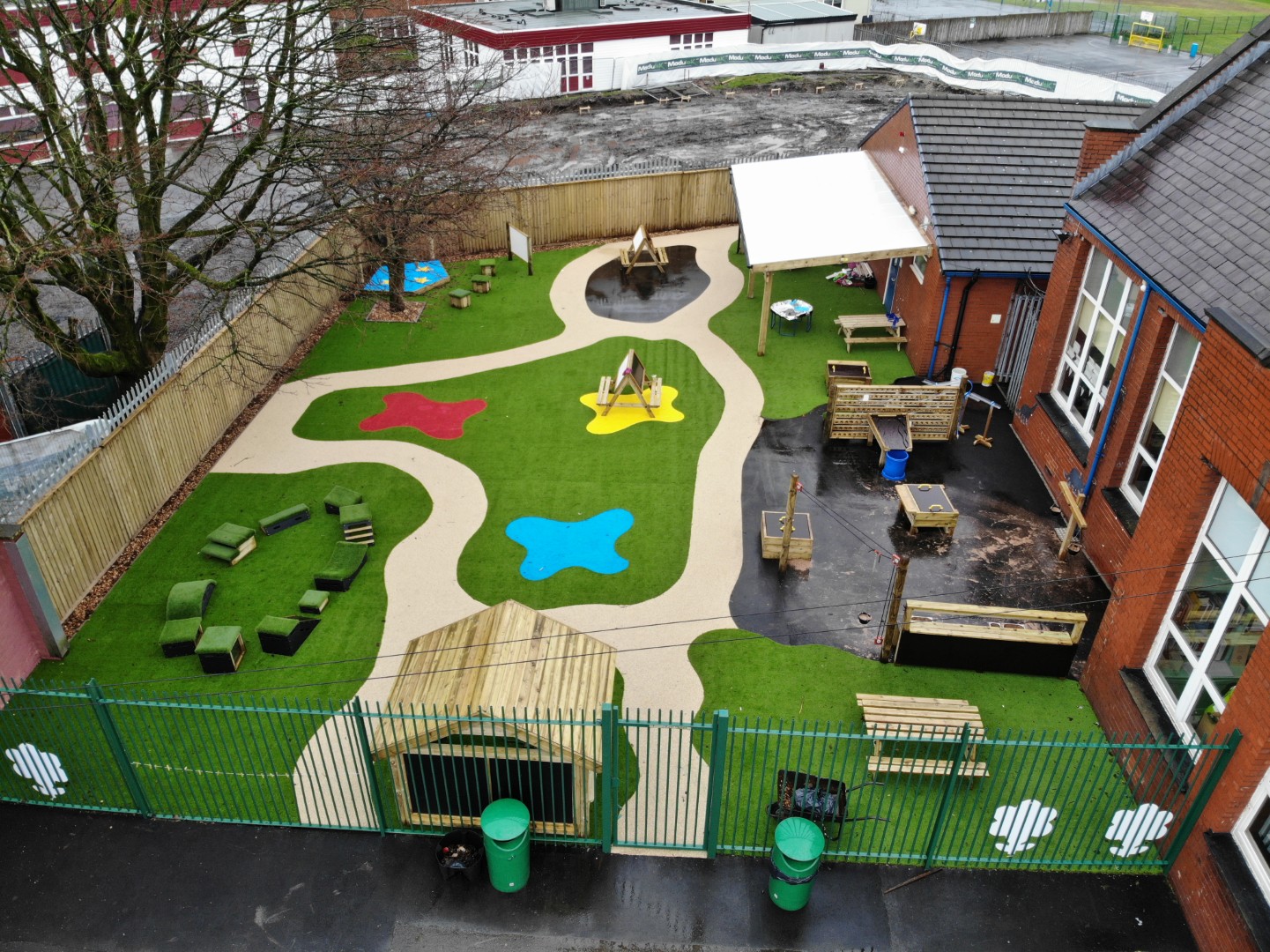
If playtimes continue to be reduced, are we taking away children’s freedom to interact with their peers in an unstructured way without constant adult supervision?
My own primary aged children are taken to school by an adult, and attend different after-school clubs under adult supervision. I am aware that their childhood looks different from my own and that their carefully planned routines are often adult directed.
Therefore, I highly value opportunities for my children to engage in freely chosen outdoor play. Much of what happens in play will remain a mystery to adults, as it should! Playtime is a vital part of growing up, where children are allowed to socialise and build new worlds of adventure with their friends.
Trust Pentagon Play to Transform Your Playspace
At Pentagon Play we know that every school is unique.
Our team of Playground Consultants work in partnership with school staff when assessing a playground landscape. As part of our consultation process, we ask questions in order to map and observe how the space is currently used by pupils. In fact, we really enjoy working directly with students, finding out which areas of the playground they currently enjoy and listening to ideas for improvement.
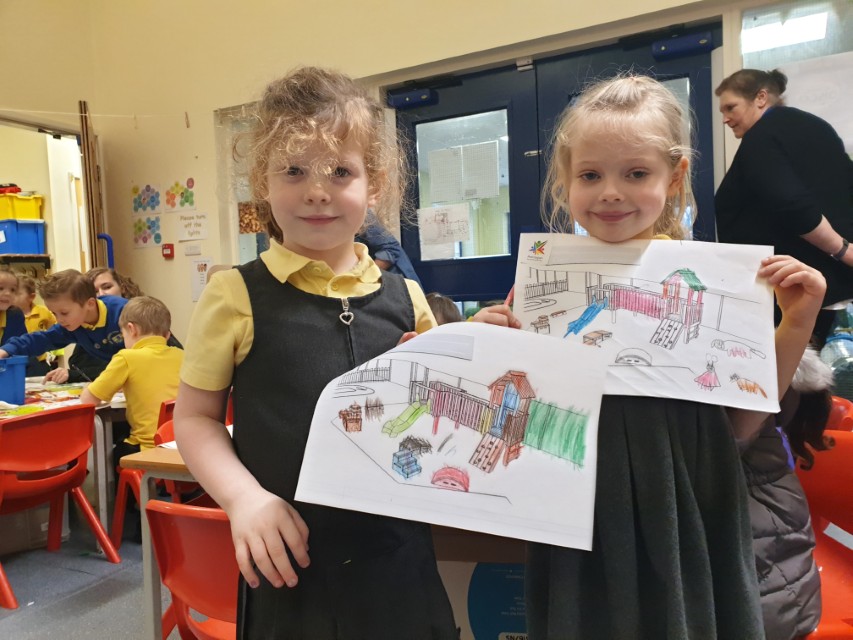
Following the consultation stage our in-house design team create personalised 3D visualisations and comprehensive overviews to communicate plans.
A Typical Pentagon Playground
Pentagon Playground designs often include different features which stimulate different types of play. A typical playground may include areas for gross motor development, garden and nature areas, constructive play materials and zones for creative and imaginative play.
Playground Consultants will always consider how a playspace will ‘flow’ including the different routes children can take through the playground. As well as having large open spaces where children are free to run and play games there could also be enclosed spaces such as dens or secret spaces underneath play towers.
Creating Multiple Opportunities to Play and Problem Solve
A typical Pentagon Playground presents children with multiple opportunities to play and problem solve. Pentagon products are flexible and challenging and can be used in numerous ways.
Free play zones such as water, sand and mud kitchens allow children to experiment with a range of materials and learn through hands-on exploration. Many of our products such as our Get Set, Go Blocks, the Rockies and our Rope and Pulley Materials Mover really encourage students to be more physically active in their play when lifting, carrying and transporting resources.
Our products provide children with more of a ‘purpose’ therefore reducing playtime incidents. As children learn to engage with our playground resources practitioners find that children’s play become more creative as they find new and interesting ways to play.
Every child knows how to play but in order to provide enriching playtimes Pentagon Play provide the necessary knowledge, resources and skills.
Thinking of a Big Change…
A Pentagon Playground transformation may result from a shift in school policy. Some schools we have worked with were looking to expand their playground space, opening up previously unused areas.
Other settings want to design a playground which would facilitate outdoor play in all weathers. For some schools they may decide to add more elements of ‘risk’ to the playground such as a Forest Circuit to introduce climbing or Forest Pull Up and Roll Over Bars to encourage gross motor development.
Schools may contact us to change the landscape of the playground by installing mounds, tunnels and playturf, creating an all year round playspace. Other settings hope to create higher levels of integration across age groups and contact us for advice about how their playground could be opened up and which resources would be best for multiple classes.
Our bespoke approach to playground design places us firmly as the UK’s leading experts in playground transformations.
Are Students Simply Bored at Playtimes?
Perhaps high levels of playground incidents occur from children feeling bored, not knowing what to play and inevitably falling out during playtimes. There may not be enough playground resources or materials may offer limited possibilities for play. When we picture a Pentagon Playground, we like to think that every child will be active and engaged.
Many of our ‘Imaginative and Creative’ products such as our Mud Kitchens, Messy Play Dig Pit, Water Play Packages, Sand Boxes and more encourage children to use a range of natural materials: grass, twigs, pebbles, leaves and pine cones can be anything children can imagine, providing infinite play possibilities.
Pentagon Freestanding Play equipment such as our Get Set, Go! Blocks, Play Builder Sets and The Rockies encourage children to use equipment in endless ways. Pupils are always finding new and interesting ways to play with these pieces and schools can rest assured that these durable and most importantly safe timber pieces are built to last.
Pentagon’s wide range of playground equipment keeps children’s bodies and minds active during playtimes. When we conduct our return visits to schools, teachers often report that children are doing and learning new things, they are playing with different children across year groups, the same piece of equipment is used in multiple ways and pupils are learning to negotiate amongst themselves.
Create Your Inspiring Playground Environment with Pentagon Play
It is more important than ever that we offer all children open-ended, inspiring playground environments where they can engage in hours of pretend play and develop creativity. A Pentagon Playground offers an inspiring outdoor environment in which children can explore.
Playtime has the power to help children to feel less stressed, happier and more excited about school. Often if we ask children their perceptions about school their satisfaction seems to be directly related to the school playground.
If we ask children what they need from school or would like to do most during the school day what do we think they would say…?
I like to climb,
I like to make dens,
I like to run and jump,
I like to dress up,
I like to splash in the water table,
I like sand and mud and sticks and leaves,
I need a big space with bats and balls,
I need spaces to play hide and seek,
I need other children to play with,
I need to play.




